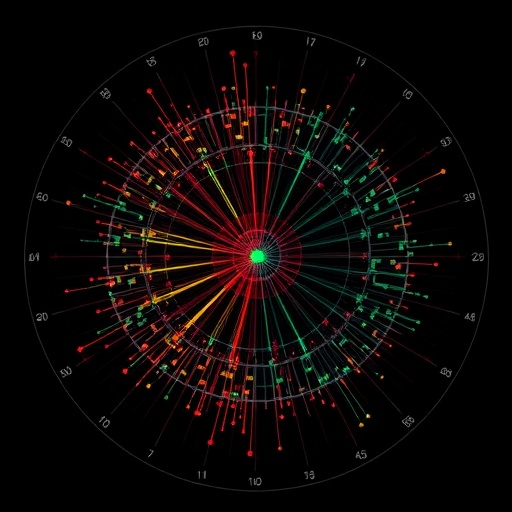Formula could tell ecologists which species will come to their own ‘behavioral rescue’

Credit: Jeff Fitlow/Rice University
HOUSTON — (June 14, 2019) — Finding a shady refuge to cool off on a hot day could be more than a lifesaver in a warming world. It might save several species that would otherwise go extinct due to global warming, according to an analysis by ecologists at a dozen institutions.
“Animals are not passive, and there’s plenty of evidence that some of them will seek out shade to regulate their body temperature,” said Rice University ecologist Volker Rudolf, co-author of a study in Global Change Biology that examined both the behavior and habitats of 39 species. “The big question, for ecologists, is whether we can create a predictive framework that uses what we already know about species’ behaviors and habitats to predict whether this behavior might buffer them from rapid climate change and potentially rescue them from otherwise going extinct.”
Rudolf said he and his colleagues, including study co-lead authors Samuel Fey of Reed College and David Vasseur of Yale University, set out to create such a framework, in part because a number of high-profile studies have ignored behavior in making predictions about the possible impacts of climate warming.
Scientists have examined the impact of temperature on the fitness of many species. To control for external factors, almost all such tests are performed in a laboratory, where temperature can be increased while all other factors remain constant, said Rudolf, a professor in Rice’s Department of BioSciences. The overall health, or fitness, of individuals often falls off as temperatures increase, especially in insects and other ectothermic animals whose bodies don’t self-regulate temperature.
“Behavior allows for self-regulation of body temperature, even in some cases where physiology doesn’t,” Rudolf said. “So ignoring this behavior means you’re probably making wrong predictions.”
But behavior only goes so far. If a creature lives where there is no shade or other means to cool off, it’s obviously not an option. It may also be impractical, especially if getting to the shady spot requires an enormous expenditure of energy.
To examine the consequences of this behavior across a wide range of animals, the scientists created a mathematical framework that accounts for variability in microclimate in the habitat of a species to estimate the cost-benefit trade-off an individual faces when expending energy to seek shade. The framework was first verified on tests with the southern rock agama, a lizard native to South Africa, and was later applied to a database of 38 insect species from Europe, Asia, North America, Africa and Australia.
Using International Panel on Climate Change temperature projections for the year 2050, the researchers found that 19 of the insects were likely to be negatively impacted by warming temperatures. They further found that behavior would likely mitigate the ill effects of warming for 17 of the 19 species, including six that were predicted to experience “behavioral rescue,” a situation where behavioral adaptation keeps the species from going extinct. In fact, warmer temperatures, in conjunction with behavioral adaptation, were predicted to increase fitness for 10 species.
“With climate change already increasing temperatures worldwide, it is important to find ways to forecast how this will affect individual species as well as tightly couple ecological communities,” Rudolf said.
In addition to looking at the direct effects of temperature on one species, he said it will be important for ecologists to consider how rising temperatures will affect a species’ predators, competitors and food resources, including prey. Where looking at temperature alone might suggest a species will do better or worse, those predictions could change based on the impacts on closely coupled species.
Additional co-authors include Karla Alujevic? and Susana Clusella-Trullas of Stellenbosch University in South Africa; Kristy Kroeker of the University of California, Santa Cruz; Michael Logan of the University of Nevada, Reno, and the Smithsonian Tropical Research Institution in Panama; Mary O’Connor of the University of British Columbia; John DeLong of the University of Nebraska; Scott Peacor of Michigan State University; Rebecca Selden of Rutgers University; and Andy Sih of the University of California, Davis. The research was supported by CapeNature and initiated by conversations at the 2016 Gordon Research Conference on Predator-Prey Interactions.
###
High-resolution IMAGES are available for download at:
https:/
https:/
https:/
Additional information:
The DOI of the Global Change Biology paper is: 10.1111/gcb.14712
A copy of the paper is available at: https:/
Rudolf lab: volkerrudolf.weebly.com
Rice Department of BioSciences: biosciences.rice.edu
Wiess School of Natural Sciences: naturalsciences.rice.edu
Related research from Rice:
Dragonflies reveal how biodiversity changes in time and space — June 30, 2017?https:/
Moving up the food chain can beat being on top — Jan. 17, 2017?http://news.
Where were you born? Origin matters for species interactions — June 13, 2016?http://news.
Ecosystems change long before species are lost — Aug. 12, 2013?http://news.
Study: Ecological effects of biodiversity loss underestimated — Nov. 30, 2010?http://news.
This release can be found online at news.rice.edu.
Follow Rice News and Media Relations via Twitter @RiceUNews.
Located on a 300-acre forested campus in Houston, Rice University is consistently ranked among the nation’s top 20 universities by U.S. News & World Report. Rice has highly respected schools of Architecture, Business, Continuing Studies, Engineering, Humanities, Music, Natural Sciences and Social Sciences and is home to the Baker Institute for Public Policy. With 3,962 undergraduates and 3,027 graduate students, Rice’s undergraduate student-to-faculty ratio is just under 6-to-1. Its residential college system builds close-knit communities and lifelong friendships, just one reason why Rice is ranked No. 1 for lots of race/class interaction and No. 2 for quality of life by the Princeton Review. Rice is also rated as a best value among private universities by Kiplinger’s Personal Finance.
Media Contact
Jade Boyd
[email protected]
Related Journal Article
http://dx.





